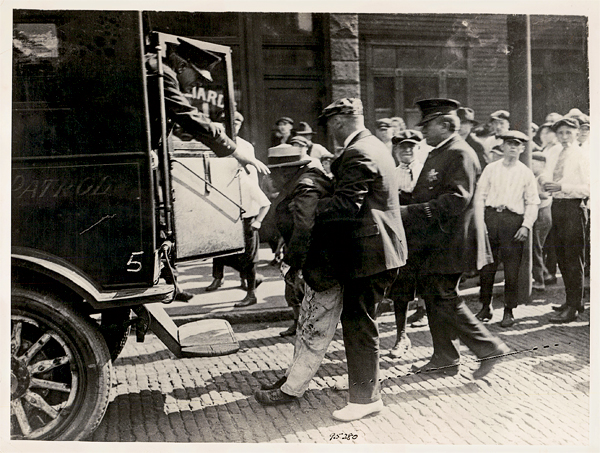
1By the early 1900s, Chicago was a cauldron of warring factions, according to Hartfield’s A Few Red Drops: The Chicago Race Riot of 1919 (January 2, Clarion Books). More than 1,300 gangs were fanned out across the city, organized largely by ethnicity. Some of the groups had whimsical names that belied their brutality: One Italian crew called itself the Onions, while a black one was known as the Twigglies.
2After World War I, the blacks who flooded to Chicago for jobs at the start of the Great Migration suddenly found themselves blocked from the workforce in favor of returning white veterans. Over the course of just four months in 1919, the number of employed blacks plummeted from 65,000 to 50,000, fueling resentment.
3Tensions boiled over in late July when a white man threw a rock at a black boy, who then drowned, at 29th Street beach. The murder set off a weeklong riot. On the second day, white men, women, and children waited outside the Union Stock Yard with switchblades and baseball bats to attack black workers and even disabled streetcars so the occupants had no choice but to wade into the mob.
4Rumors spread quickly amid the chaos, inflaming the hostility. About a thousand black people swarmed the Angelus, one of the few all-white apartment buildings in the Black Belt, after hearing that a white person had shot a black boy from a window. Police searched the building but didn’t find any suspects. Unsatisfied with the investigation, someone in the crowd threw a brick at one of the cops. The police fired back, killing four.
5The uprising culminated with the torching of a pocket of Lithuanian homes near the stockyards. White gang members in blackface perpetrated the attack to fuel hatred of blacks. The Lithuanians didn’t fall for it, though, and the riot ended—but not before 38 people were dead and 537 wounded.


